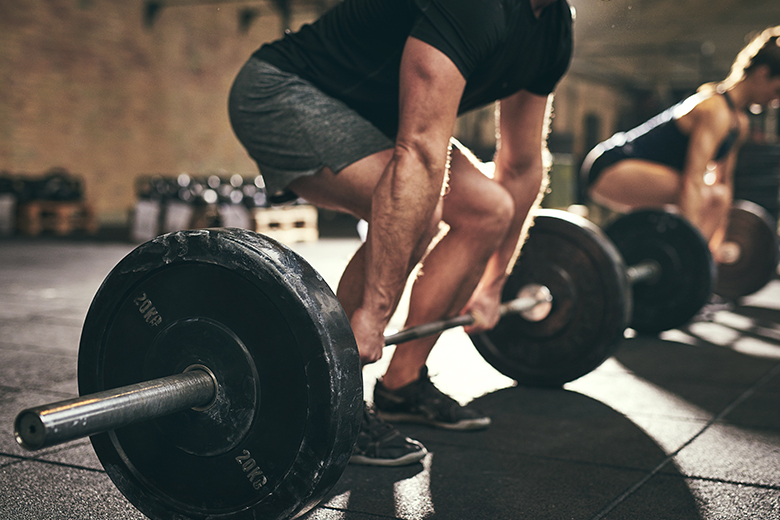Weightlifting in its purest form is lifting something up and putting it back down—that’s your deadlift in a nutshell. The deadlift is one of the best total-body moves for building muscle and burning fat, but only if it’s done right. It’s one of the three core exercises in any strength training program, along with the barbell squat and the bench press. This compound exercise works your hamstrings, glutes, abdominal and back muscles; in addition to making you strong as heck, it’s a great way to efficiently work most muscle groups in the least amount of time.
If you’re new to the exercise, practice your form first with little or no weight to make sure you’re doing the movement correctly. If you have access to a light body bar, it’ll also give you a sense of the right technique when lifting. Once you’ve mastered the move, incorporate dumbbells, kettlebells, barbells or resistance bands to up your strength training.
Since deadlifts are a complete body move, don’t skimp out once you’re an expert in technique because it’s a move that keeps building strength. Are you really going to say no to a stronger core? We thought so. Read on to learn more about its many benefits.
Activate your hip extensions: Research indicates that deadlifts outweigh squats when it comes to training your glutes and hamstrings, which are commonly targeted muscle groups due to their function use and aesthetic appeal when adequately trained. Activating these muscles during training will improve strength and size of these muscles.
Reduce lower back pain: While lower back pain can have several causes, research suggests that mild lower back pain can be effectively reduced through regular deadlifts, sometimes reversing the ailment altogether. You’ll need to keep your spine braced and neutral so your muscles aren’t strained and also get clearance from your doctor that it’s safe for you to attempt deadlifts.
Improve jump performance: Jumping ability reflects the overall development of your lower body power. Since deadlifts target muscle groups in the lower body, there is evidence to suggest that strength training improves maximal jump performance.
Higher bone density: Loss of bone mineral density results in osteoporosis, which increases the risk of fractures, injury and loss of mobility. Resistance training such as deadlifts are known to slow down or even reverse age-related loss of bone mineral density by loading the body with external resistance.
Strengthen your core: Training your trunk muscles and core are an important part of any fitness program. Deadlifts and free-weight exercises effectively activate and strengthen the muscles that stabilize your spine, making your core stronger in the long run.
Boost your metabolism: Weight loss is a common goal of several people on fitness regimens. Losing weight, particularly by reducing body fat requires you to burn more calories than you consume, which in turn improves your metabolism. Research suggests that resistance training such as deadlifts is among the most efficient movements to increase calorie burn (even when your body is at rest) as well as improving muscle growth.
Simplicity of equipment: All you need for a deadlift is a barbell and some plates, or even a weighted object with a handle like a kettlebell. Deadlifts are a minimalist exercises for their many extensive benefits.
Once you’re comfortable and familiar with the movement, the deadlift will be an exercise you’ll want to slot into all your lower body workouts. The numerous variations and different ways to do them (different kinds of equipment) means you won’t feel constrained and can level up your workout with ease!




Leave a reply